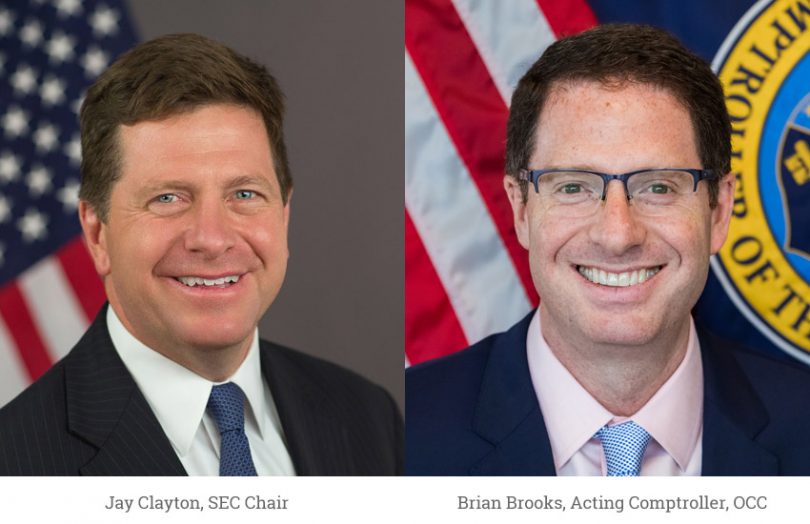In a webinar yesterday, Jay Clayton, Chairman of the U.S. Securities and Exchange Commission (SEC), observed that all stock trading is now electronic, compared to twenty years ago. In the past, there were stock certificates, now there are digital entries. “It may very well be the case that those all become tokenized,” said Clayton. Along with Brian Brooks, Acting Comptroller of the Currency (OCC), he took part in a Digital Chamber of Commerce event, “Two Sides of the American Coin: Innovation & Regulation of Digital Assets”. A full transcript is available here.
True to the event’s title, both regulators were keen to recognize and encourage innovation, but within limits.
The point Clayton was making is that the technology might change, but the principles underlying certain activities’ regulation remain the same.
Article continues …

Want the full story? Pro subscribers get complete articles, exclusive industry analysis, and early access to legislative updates that keep you ahead of the competition. Join the professionals who are choosing deeper insights over surface level news.






